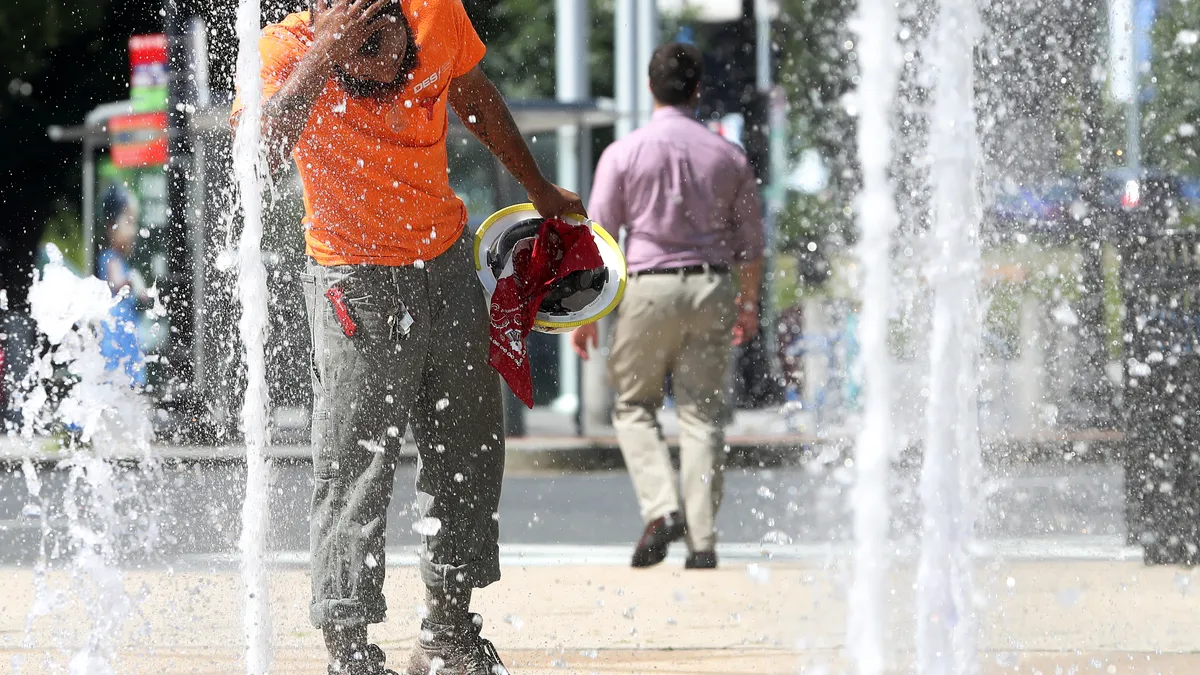Dive Brief:
- Washington, DC, has once again risen to the top of the Trust for Public Land's (TPL) ParkScore rankings, released Thursday.
- Washington finished ahead of Minneapolis, which was last year's winner, in part due to its high marks for park equity. The District's residents who identify as Black, Hispanic and Latinx, Indigenous and Native American, or Asian American and Pacific Islander are equally likely to live within a 10-minute walk of a park as White residents, TPL said, while park space per capita is also distributed nearly equally in the city.
- The 2021 rankings, which measured park equity for the first time in the index's 10-year history, reported that 75% of residents in the 100 largest U.S. cities live within a 10-minute walk of a park. However, significant inequities in park space and distribution remain. Residents of majority-minority neighborhoods have access to an average of 44% less park space per capita than residents of predominantly White neighborhoods, while residents of low-income neighborhoods have access to 42% less park space than residents of high-income neighborhoods.
Dive Insight:
The issue of equitable park access took on a heightened sense of importance during the pandemic, as people sought outdoor space for recreation and to remain socially distant. Last summer's protests for racial and economic justice also further highlighted the need for cities to invest more in communities that have traditionally been left behind in a number of areas, including park access.
TPL's new equitable parks access measurement caused a shake-up in its rankings. Baltimore rose 28 places to 30th this year compared with last year, while Toledo, Ohio, jumped from 77th place in 2020 to 50th this year. Newark, New Jersey, also jumped 27 spots, to 42nd.
Of the country's 100 largest cities, only Boston (No. 12) and San Francisco (No. 6) have 100% of residents living within a 10-minute walk of a park or other public open space.
But the measure of a 10-minute walk still doesn't tell the whole story, said TPL Research and Innovation Director Linda Hwang. She noted that acreage of park space is also a crucial factor, and disparities between minority and white neighborhoods show the historic disparities that have clouded urban planning for generations.
Aspects of the 10-minute walk that affect safety and accessibility must also be assessed and taken into account when determining equitable access, Hwang said.
"Instead of using distance as the crow flies, we actually really like to consider parks that you can physically get to by foot," Hwang said. "So that's what we think about in terms of access. I think there's a lot of opportunity for us as we work with park agencies, cities and local community organizations to think about, what is that 10-minute walk like for you?"
There also currently appears to be a disconnect between city leaders and what their residents are experiencing on the ground. In the annual Menino Survey of Mayors from Boston University in late March, just over a third of mayors said they do not expect to see changes their cities made to outdoor spaces during the pandemic to last long-term due to budgetary constraints, and only 52% said they believe the quality of parks varies across neighborhoods.
Hwang said that disconnect may be because mayors and other officials lack concrete data around park availability, especially in underserved neighborhoods.
"Really, it's just that they don't have access to it, or it hasn't been combined in such a way where they understand, 'Okay, we have some places that have good parks, and here are the people who live in those neighborhoods,'" she said. "I think a lot of people have some anecdotes, and a sense that this district is primarily made up of this people this income, these types of industries. But that information maybe is not as often brought together with parks and park access."
There is still plenty of work to be done to improve park equity, according to Hwang. Cities that sign joint-use agreements with their school districts, for example, to allow members of the public to use those playgrounds and other facilities outside of school hours, could help another 19 million city residents have access within a 10-minute walk of their homes, she said.
Cities should also put a park equity plan in place, she said, which emphasizes community-led design of public spaces and investments in areas that have traditionally been underserved. A March report from the Knight Foundation found community-led park design and planning can have a "ripple effect" on the rest of the city, as it can help in areas like workforce development and youth engagement and contribute to broader community development and resiliency. Hwang said it can also build a relationship between governments and their residents.
"The act of bringing people together to daydream about their parks and about their neighborhoods builds a lot of community trust," she said. "For a lot of folks who engage in a park design process, it's the first time that they've ever engaged in any kind of formal interaction with a city leader or decision-maker. When people have that experience, they realize there is a lot more they can control in their neighborhood."












